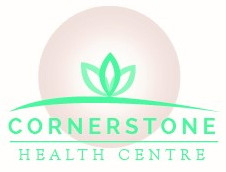Dr. Butwell Explains the Value of Chiropractic Research
Research makes the healthcare world go ‘round! Research solidifies the role of healthcare’s pain relieving ability. For chiropractic healthcare, much research revolves around documenting chiropractic’s benefit for painful musculoskeletal pain issues like neck pain, back pain, arm pain and sciatic leg pain. Dr. Butwell offers just such research-documented, effective care to our Georgetown chiropractic patients.
CHALLENGE: DO HIGH QUALITY RESEARCH
A set of back pain researchers challenged fellow researchers to come up with long-term plans to decrease the problem of low back pain on sufferers and healthcare systems. They explained that developing effective strategies remains a huge job for back pain clinicians, doctors, and researchers. Vexingly, back pain disability levels have not increased despite an increased quantity of published research papers regarding back pain care. No consensus on the optimal way to manage low back pain has been achieved. Non-drug and non-invasive options like exercise, manual therapy, massage, and such are general recommendations. Another group of reviewing researchers indicated a few issues with back pain research: design and analysis within the treatment clinical trials. (1) Designing research studies is tough. Designing a “sham” protocol for spinal manipulation that seems like spinal manipulation is really challenging. (Just touching a spine can be relieving some, but that’s a topic for a different article!) Observational studies are the next in line. How so? Researchers observe what happens to patients when they undergo treatment and report on changes and effects. Fortunately, Cox® Technic research has a mix of biomechanical and clinical observational studies resulting in case reports, case series, plus retrospective and prospective clinical studies. Dr. Butwell feels this mix of research support helps outline the expectations our Georgetown chiropractic patients may expect.
MINIMAL CLINICAL IMPORTANCE
On occasion, chiropractic physicians and low back pain patients alike are disappointed with the outcomes of treatment for back pain. They should not be! In medicine, the minimal clinically important difference (MCID) is defined as 30% or 20% and even 10% improvement. That’s reported as an “effective” outcome. Cox® Technic has proposed 50% improvement in 30 days as the aim…and still does. Many times, chiropractic patients realize that 50% relief in less than 30 days and that the 50% relief is more like 70% or 80% or 90%! Sometimes, a patient’s response may be slower in reaching relief or only reaches 30% or 40%. Some patients want more while others, particularly patients who have previously had back surgery or sought non-relieving care from many other providers, are thrilled. A study of 1232 low back pain subjects discovered a MCID pain intensity of 2 (meaning a 2 point change on a scale of 0 no pain to 10 worst imaginable pain). That is not a big move but is realistic. (2) It is a statistic to share. Compared with medical and surgical outcomes for back pain treatment that are as low as 10% or 30% expected improvement MCID, our Georgetown chiropractic clinical outcome goals are high and often achieved.
THE CHALLENGE OF CHIROPRACTIC RESEARCH – AND HOW CHIROPRACTIC ANSWERS
Chiropractic, like other complementary and integrative healthcare professions, experiences a little more difficulty in keeping research flowing as many programs are not incorporated into large university settings with well-established and well-funded research departments. Global chiropractic researchers are looking for am amswer. Australia, Canada, and Denmark chiropractic researchers have created a leadership academy (CARL – Chiropractic Academy for Research Leadership) for early-career chiropractic researchers to stimulate more chiropractic research. US-based researchers are turning to the RAND Corporation’s Center for Collaborative CIH Research to combine research talent and resources to elevate chiropractic’s quality and quantity of research. (3,4) Robust research continues at chiropractic universities to record the benefits of chiropractic for musculoskeletal-related pain like back pain, neck pain, arm pain and leg pain.
CONTACT Dr. Butwell
Listen to this PODCAST with Ram Gudavalli, PhD, principal investigator of many Cox® Technic research studies, on The Back Doctors Podcast with Dr. Michael Johnson as he explains research studies he’s managed.
Make your next Georgetown chiropractic appointment now. Bring your questions about the research supporting our chiropractic care with you! Dr. Butwell loves to share research!

